Author: Li Yuanyuan
Looking at the world, perhaps no one understands electric vehicle subsidies better than Tesla.
In the United States, Tesla has received nearly $3 billion (approximately RMB 19.2 billion) in various government subsidies over 20 years, including tax breaks, loans, etc.; in China, Tesla received RMB 2.1 billion in new energy vehicle subsidies in just 2020 alone; in Europe, the EU has approved subsidies to the newly-built Tesla factory in Berlin, with the amount potentially reaching 1.14 billion euros (approximately RMB 8.46 billion).
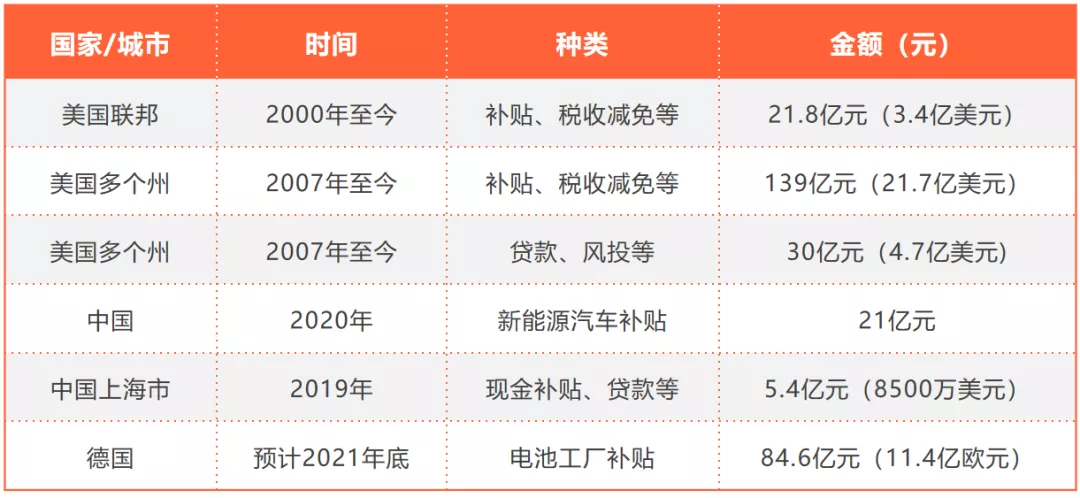
In terms of subsidy amounts and geographical coverage, Tesla is truly the king of global electric vehicle subsidies. Without the generous support of many countries, Tesla’s internationalization process would not have been so rapid and its profitability may also have been greatly reduced.
However, Tesla CEO Musk stated that subsidies are not essential for Tesla, but he admitted that they are helpful and act as a catalyst for innovation acceleration for Tesla, SolarCity, and SpaceX.
In negotiations with US state governments over production capacity landing businesses, Musk was very tough and eventually secured much higher subsidies than the counterparty’s offer.
He is also very satisfied with the subsidies and other preferential treatments granted by Shanghai, and in the Tesla annual report, Musk expressed his hope that the financial support received by the Tesla Shanghai factory could also be obtained by the Berlin factory, showing high negotiation skills. From the current information, Musk’s expectations for Germany are likely to be met, even exceeding expectations.
In the face of subsidies, even the eccentric Musk is honest.
US: “Wherever subsidies are available, Musk will go”
On September 5, 2014, the Governor of Nevada, Brian Sandoval, signed an agreement with Musk in Carson City, the capital of Nevada, announcing that Tesla’s “Super Battery Factory” would be located in the state.
After the signing ceremony, Sandoval and Musk laughed heartily in front of the media. Sandoval boasted that Tesla building its factory in Nevada would “forever change the development trajectory” of the state, while Musk praised the vision of the Nevada state government, making it seem like a sure “win-win” deal.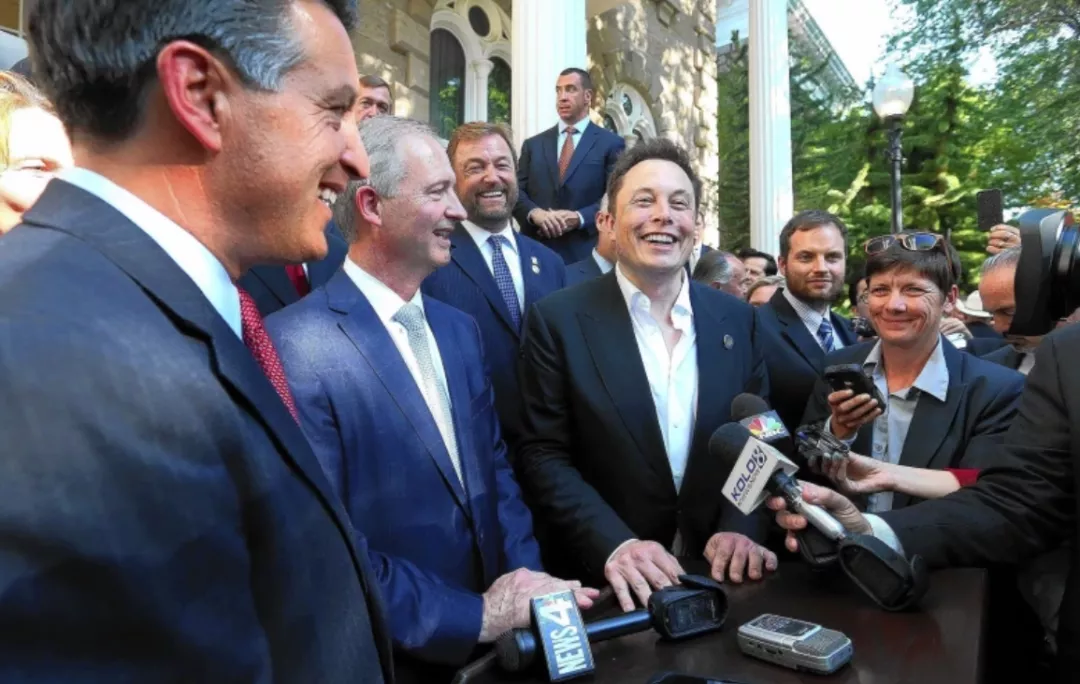
However, in the eyes of many, Nevada paid too much for this deal, while Tesla, who had been in a dominant position in the negotiations, got a huge advantage–up to $1.3 billion in tax incentives, far beyond the amount originally offered by Nevada.
In 2013, officials from 7 US states including Nevada, California, and Texas arrived at Tesla’s factory in Fremont, California. Here, Tesla representatives introduced their plan to build the world’s largest power battery factory, and officials gave their own favorable conditions, hoping Tesla would choose to build the factory in their own state.
Initially, Nevada had no advantage in the competition, and the $600-700 million incentive package proposed by the state was far lower than Tesla’s expectations. In addition to various preferential policies, Tesla also offered a condition of prepayment of $500 million. Steve Hill, executive director of the Nevada Office of Economic Development in charge of business negotiations, said that Tesla’s conditions were risky and that the state could not accept them.
Just as the outside world suspected that the negotiations between Nevada and Tesla were about to break down, Steve Hill flew to Tesla headquarters again and continued negotiations with both sides. After a year and a half of negotiations, on Labor Day in 2014, Brian Sandoval and Musk finalized the deal for the Tesla battery factory to settle in Nevada over the phone.
Nevada defeated several other states with a $1.3 billion tax incentive and successfully attracted Tesla. Tesla promised to invest $10 billion in the Tesla battery factory in Nevada over the next 10 years and provide $1 million in funding to the battery research and development at the University of Nevada Las Vegas.
The cooperation between Nevada and Tesla soon drew criticism from outside. Analysts believed that the deal was not equal. Greg LeRoy, executive director of the American NGO Good Jobs First, analyzed that Musk’s tactics for handling Nevada’s tax reduction plan were very sophisticated, and the $1.3 billion tax incentive was very unreasonable. The Nevada government was deceived by Tesla.
Good Jobs First is an American government subsidy watchdog organization that tracks the landing of subsidies from the federal and state governments to businesses. With this $1.3 billion package of subsidy policies, Nevada has become to date the state that has given the most subsidies to electric vehicle companies in the United States.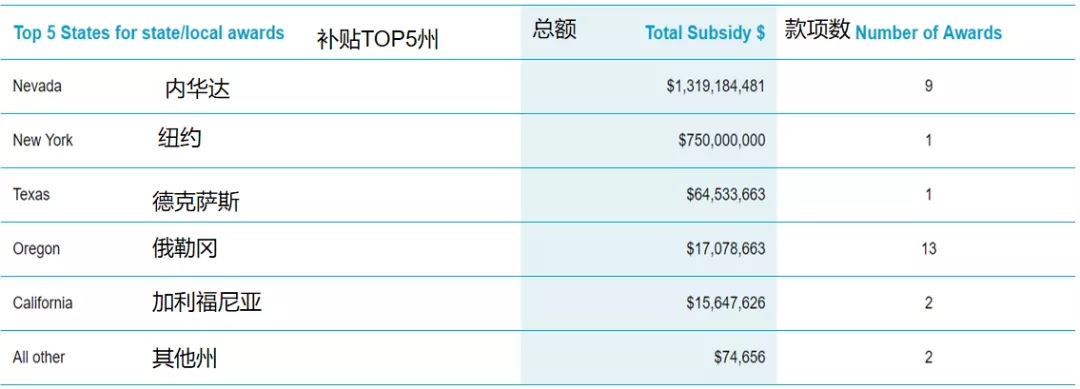
In the United States, consumers can receive up to $7500 tax credits for purchasing electric vehicles.
Tesla benefits greatly from this policy, especially during its initial development stage when it struggled with years of losses. Federal and state tax credits, low-interest loans and direct investments have all helped Tesla overcome its financial difficulties, and it turned a profit from the third quarter of 2019 onwards.
In response to the article by the Los Angeles Times criticizing Musk’s empire (including Tesla, SolarCity and SpaceX) for relying on government subsidies, analysts say that “subsidies are a common theme among these three companies, and without them, these companies would not exist. Wherever there are subsidies, Musk will go there.”
Musk quickly refuted the article, accusing it of misleading the public. He insisted that these government subsidies were not necessary for Tesla, but he admitted that they were helpful and accelerated innovation at Tesla, SolarCity and SpaceX.
Musk’s argument may sound somewhat opportunistic, and he may become restless once he is deprived of the subsidies.
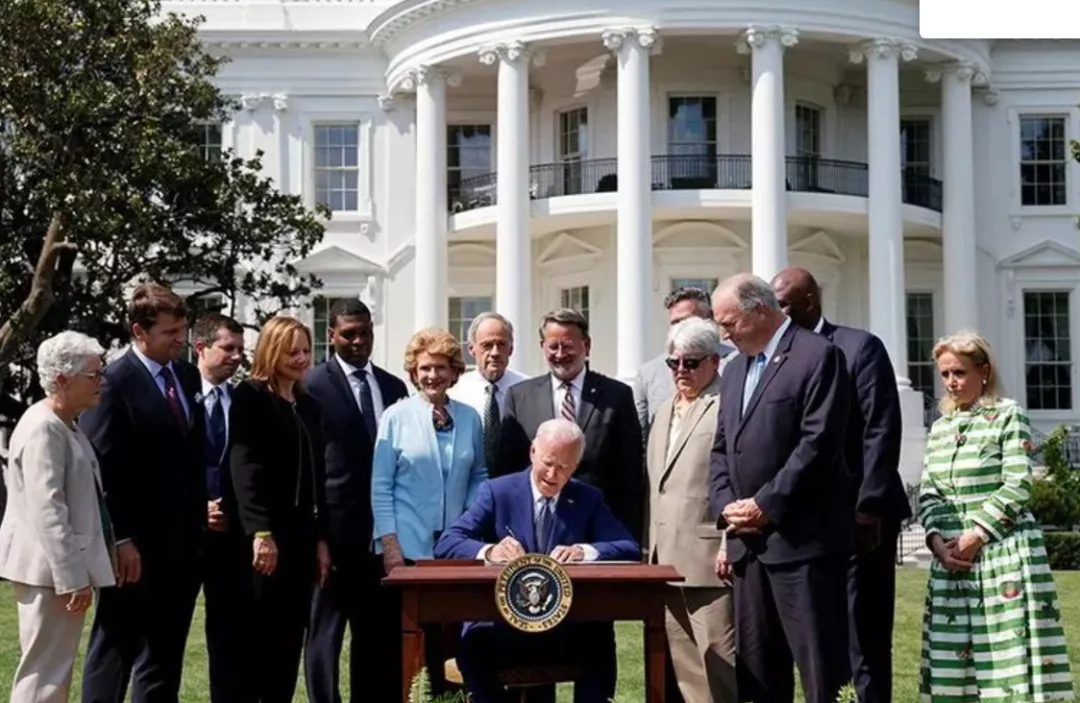
In August 2021, President Biden signed an executive order on electric vehicles at the White House. Representatives from General Motors, Ford and Stellantis (Chrysler’s parent company) attended the meeting (), while Tesla was not invited. Musk tweeted that the situation was “strange” later.
In September 2021, Democratic lawmakers proposed that the maximum tax credit for electric vehicles assembled by US union workers would increase by $4500 on top of $7500. Furthermore, if the battery and other components were also produced in the United States, the tax credit would increase by another $500, up to $12,500 in total.
This proposal is highly advantageous to Ford and General Motors, but excludes Tesla and Toyota, which do not employ union workers. Musk immediately tweeted, accusing Ford and the United Auto Workers of coming up with the proposal, “which is not good for American taxpayers”.
China: The Champion of Rapidly Rising Subsidies
Compared with various taunts and ridicule directed at the Biden administration, Musk has recently spoken highly of China.He not only praised the construction and production efficiency of Tesla’s Shanghai factory multiple times, but also spoke highly of the “China speed” and the Chinese government’s sense of responsibility for the people’s well-being, which may be more responsible than that of the US government, during an interview with American media.
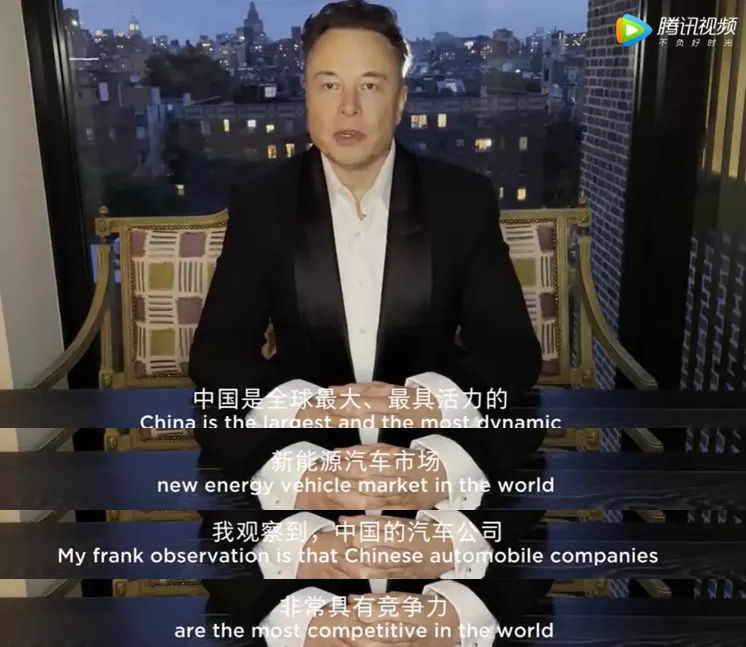
Even Musk, who is arrogant, was very satisfied with Tesla’s treatment in China as evidenced by his high praise of China. Naturally, the “China speed” that he greatly appreciated includes the speed of construction and production at the Tesla Shanghai factory, and perhaps also the speed of subsidies.
According to Tesla’s 2019 annual report, the Shanghai government provided certain incentives totaling approximately USD 85 million (approximately RMB 590 million) to the Tesla Shanghai factory that year, including approximately USD 46 million (approximately RMB 320 million) in cash and approximately USD 39 million (approximately RMB 270 million) in other incentives.
The report also revealed that in 2019, Tesla completed four low-interest loans, unsecured loans and other loans totaling RMB 19.75 billion ($2.98 billion) from Shanghai Construction Bank, Agricultural Bank of China, Industrial and Commercial Bank of China and Pudong Development Bank. This enabled Tesla to quickly complete factory construction with limited funds.
On January 7, 2019, the Tesla Shanghai factory broke ground, and on January 7, 2020, the first domestically produced Model 3 was delivered. Tesla completed all the work of purchasing land, constructing the factory, obtaining qualifications, and starting production in just one year, which can be described as lightning fast.
In 2020, the sales of domestically produced Teslas in China reached an astonishing 148,000.
According to the 2020 new energy subsidy document issued by the Ministry of Industry and Information Technology, Tesla received RMB 2.12 billion in subsidies for a recommended promotion quantity of 101,000 vehicles, accounting for one-fifth of the total subsidy for all recommended vehicles that year, becoming the champion of China’s new energy vehicle subsidies, surpassing previous subsidy mainstays such as BYD and BAIC.
The 2019 report stated, “We hope that the Berlin factory can also receive financial support similar to the Shanghai factory.” From current news, Tesla’s expectation may be realized, and even exceeded expectations.
Europe: Subsidizing Tesla to Counter China
In January 2021, the EU passed a total of 2.9 billion euros in the “European Battery Innovation Program,” providing funding support to 42 enterprises in Europe that produce power batteries in order to break free from the dependence of the European electric vehicle industry on Chinese power batteries.
Tesla’s German Berlin factory, which just held its open day, may receive the largest share of subsidies.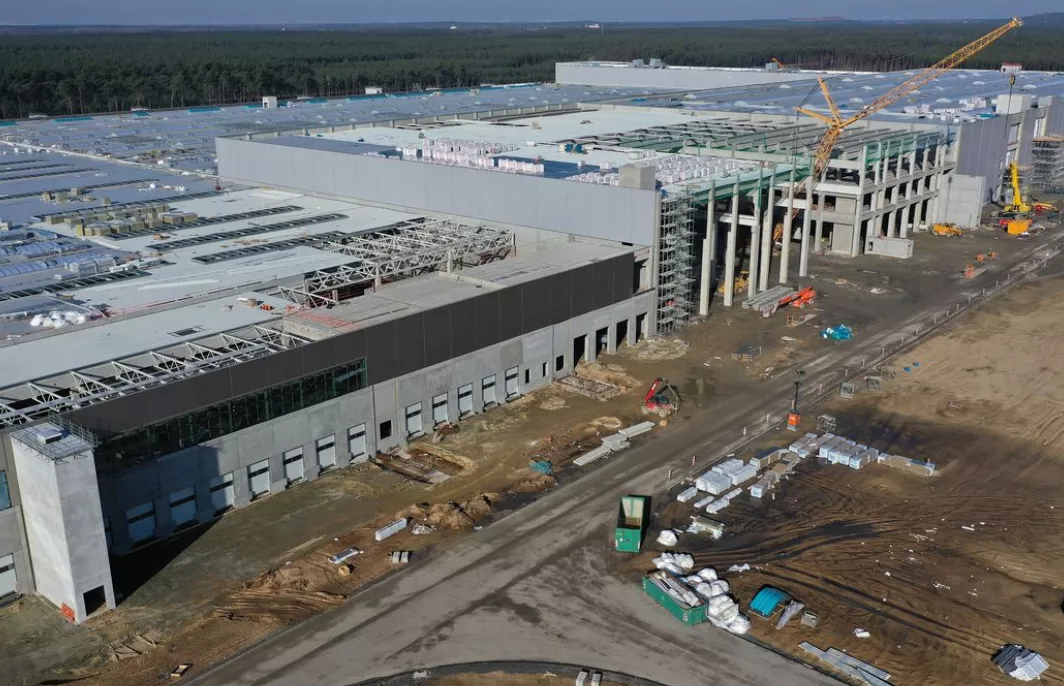
According to insiders cited by German newspaper “Der Spiegel”, the EU has approved Tesla’s Berlin factory to receive 1.14 billion euros in subsidies. A spokesman for the German Ministry of Economic Affairs said it would not be until the end of 2021 to determine how much subsidy Tesla would receive.
Although willing to subsidize Tesla, the German government’s attitude towards Tesla is far less friendly than China. In 2020, German Economy Minister Peter Altmaier told the media that Tesla must conduct research and development and create value in Germany to receive government subsidies, rather than simply treating Germany as a platform for business expansion.
Moreover, the efficiency of local production of Tesla in Germany is far behind that in Shanghai.
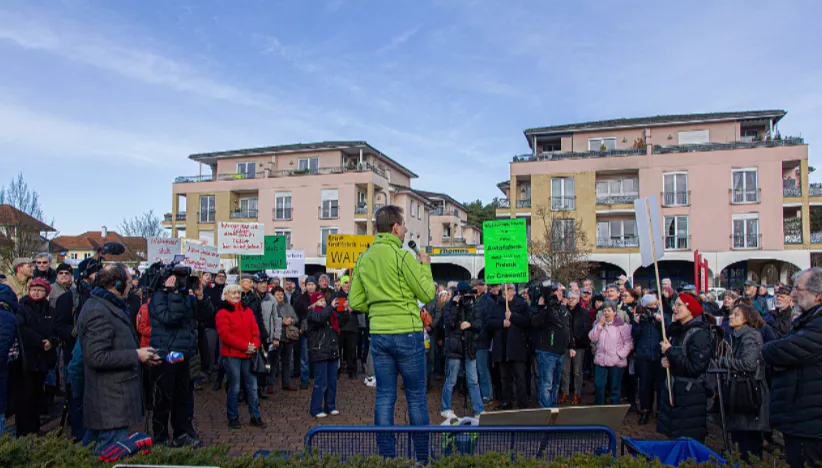
As early as January 2020, Tesla began planning its Berlin factory, but due to approval issues and other factors, the construction of the factory has been suspended and delayed several times. To this day, the official production date of the factory in Berlin has not been determined. Currently, environmental organizations are still protesting outside the factory in opposition to Tesla’s establishment in Germany.
On November 3rd, the local environmental agency in Germany initiated the consultation process again to discuss public opposition to Tesla’s Berlin factory. Afterwards, Musk lamented on Twitter, “What’s happening there is not right” (as shown in the figure below).
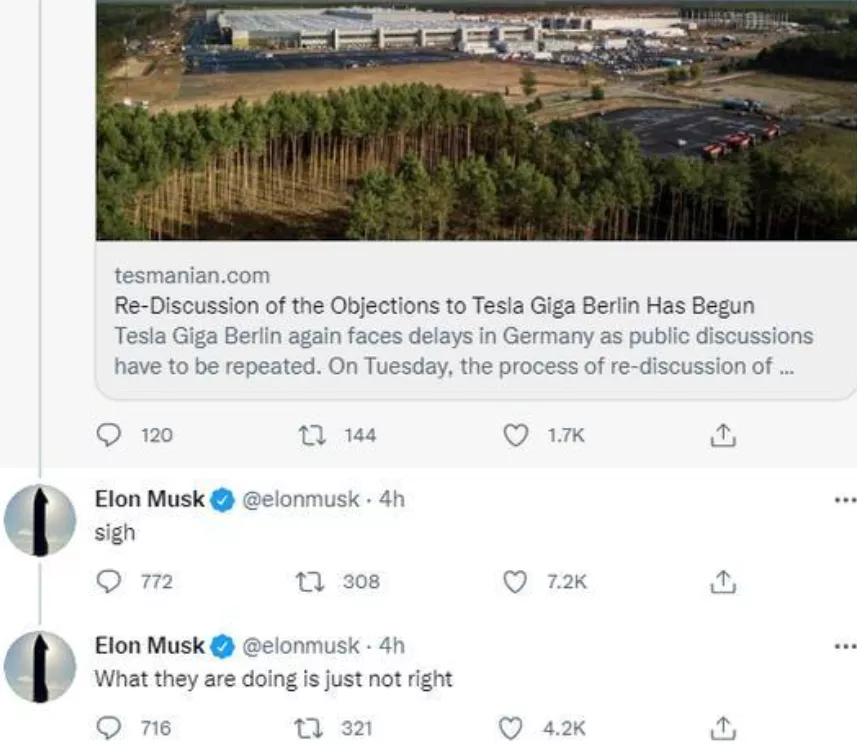
However, Musk did not make any strong comments.
After all, the 1.3 billion euro subsidy has not been received yet. Also, from the sales experience in Europe, the high subsidies provided by the German government to electric vehicle consumers are crucial for Tesla to win the European market competition. Currently, Germany is one of the countries with the highest electric vehicle subsidies in Europe, and Tesla can receive a subsidy of 7,500 euros (55,000 yuan) per vehicle in Germany.
Before the launch of Model 3, the sales of Tesla Model S in Norway and the Netherlands accounted for 80% of the total sales of the vehicle, thanks to the heavy subsidies policies for electric vehicles in these two countries. Currently, the sales volume of all Tesla models in Norway and the Netherlands is still ahead of other European countries.
Looking at the whole world, no electric vehicle company can obtain such generous subsidies simultaneously in Asia, Europe and America as Tesla, and no company can arouse the interest of governments in various countries like Tesla and Musk. As critics of Tesla’s subsidies have said, “Every state in the United States wants a Musk.”The star effect of Tesla and the courage to challenge subsidies from Musk and various governments stem from Tesla’s strong sales performance.
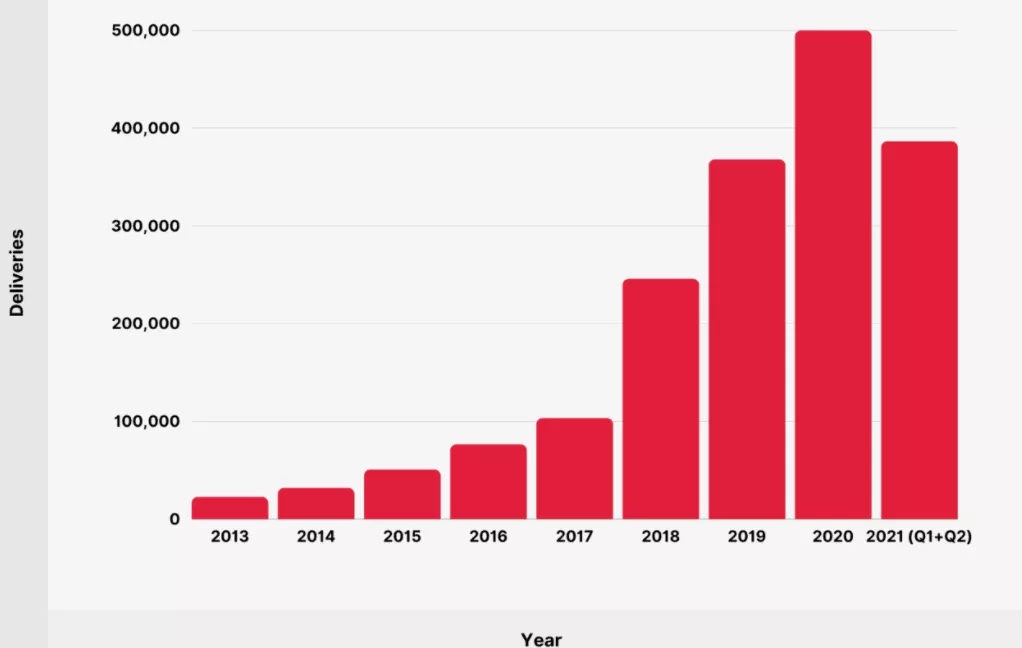
According to statistics from backlinko, Tesla’s global delivery volume was only about 20,000 vehicles in 2013, but by 2020, this number had soared to 500,000. In the first half of 2021, Tesla’s delivery volume has approached 400,000 vehicles, making it the electric vehicle company with the widest sales range and the largest number of sales. No one can match it.
Opportunities favor prepared enterprises, and so do subsidies.
This article is a translation by ChatGPT of a Chinese report from 42HOW. If you have any questions about it, please email bd@42how.com.